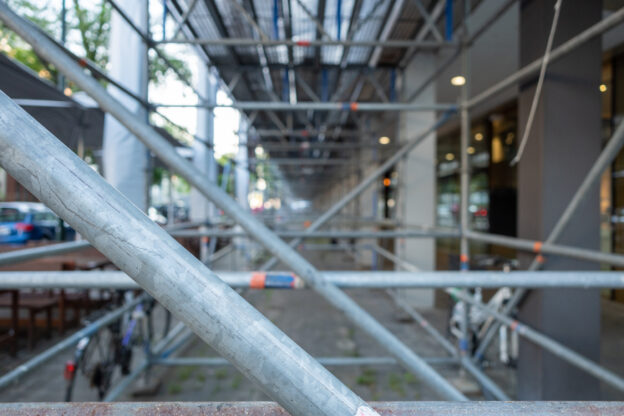The New York City Building Department recently released a new map – included below – showing the location, age, size, and type of each piece of scaffolding in the city. The types listed on the map include construction scaffolding, maintenance scaffolding, and scaffolding on buildings designated as Safe with a Repair and Maintenance Program (SWARMP). Pedestrians and cyclists can use this map to plan their routes to avoid scaffolding when they can and when they cannot, to traverse through these areas safely.
Scaffolding exists to support construction workers as they construct and repair the city’s buildings. The scaffolds, also known as “sidewalk sheds,” also protect those walking below from falling debris. But sometimes, individuals fall from scaffolding or are struck by falling objects. When this happens, the victim can suffer an injury. Construction accident victims have the right to seek compensation for their damages through personal injury claims
Different Types of Scaffolding Used in Brooklyn Neighborhoods
The map also has a designation for scaffolding deemed to be unsafe. There are a few clusters of unsafe scaffolds on the map, such as the one in Brooklyn Heights and another in the Boerum Hill Historic District. Scaffolding in these areas also tends to be larger than those found in other areas of Brooklyn. They also tend to be SWARMP scaffolds. SWARMP is a designation that the building department may give to a building that does not pose an immediate hazard to the public but has issues that can become hazardous if they are not repaired. Buildings six stories and higher must have their exterior facades inspected every five years to receive a designation of “safe,” “unsafe,” or “SWARMP.”
How Can Pedestrians and Cyclists Keep Themselves Safe when Traveling Under Scaffolds?
If you regularly walk or ride a bicycle through New York City’s streets, you can use the map embedded above to plan your route to avoid unsafe scaffolds. If you can avoid scaffolding in general, this can reduce your chance of being involved in a construction accident. But when this is not an option, which is often the case, knowing which scaffolds pose the greatest risk can help you avoid those specific areas.
Bicyclists should always wear helmets when riding. A helmet can absorb the shock of any falling object’s impact with the bicyclist’s head, reducing his or her chance of injury.
Work with an Experienced Brooklyn Personal Injury Lawyer
If you have been injured in any way because of a scaffold, whether it is because an object fell from the scaffolding or another party collided with you because of the decreased visibility caused by the scaffolding’s presence, you could be entitled to recover monetary compensation for your damages through a personal injury claim. To learn more about your rights as an injured victim and how you can seek compensation for your damages, contact Brooklyn construction accident lawyer Jeffrey K. Kestenbaum at 718-237-5586 to set up your initial consultation in our office.







